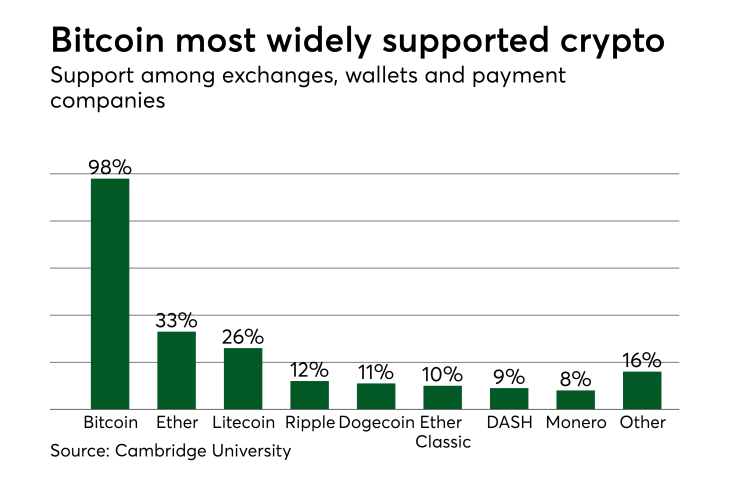In addition to a lack of simplicity, the sheer number of cryptocurrencies vying for attention make direct crypto adoption too risky. Instead, merchants should take a watch-and-wait approach, looking for three key signs that cryptocurrency is gaining traction as a payment option.
For cryptocurrency to work as a payment, it will need to be widely distributed to consumers. In the payment world, we know all too well that consumer demand drives merchant adoption.
In other words, the average person will need the ability to earn crypto, either as a supplemental reward or as payment for work, before merchants will even begin to consider accepting it.
Merchants will need to feel comfortable that enough of their vendors will also accept crypto. Likewise, consumers need to be confident that crypto will be a viable form of payment for key goods and services.
For consumers, these would include housing, utilities, food, and retail. For merchants, add commercial real estate, office supplies, and inventory to that list.

Goods and services will need price tags that are translated into cryptocurrency. Pricing in crypto will be a good indicator that merchant confidence has sufficiently matured with respect to a coin’s price stability. Ultimately, everything within the market will have an equivalent crypto price that’s relative to the consumer’s frame of reference.
These milestones require pioneers: early merchant adopters willing to bridge the gap between zero and mass acceptance. For this reason, there’s a mandate for an intermediary to enable growth on both sides of the economy.
A transitional strategy would provide a mechanism that puts crypto in the hands of the masses while also shielding merchants from direct acceptance until sufficient consumer demand exists. The first cryptocurrency to successfully execute an intermediate strategy will emerge as the first to truly become currency.





